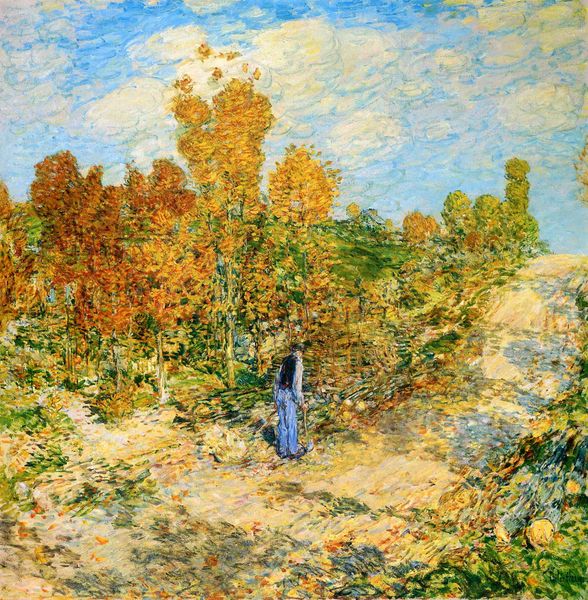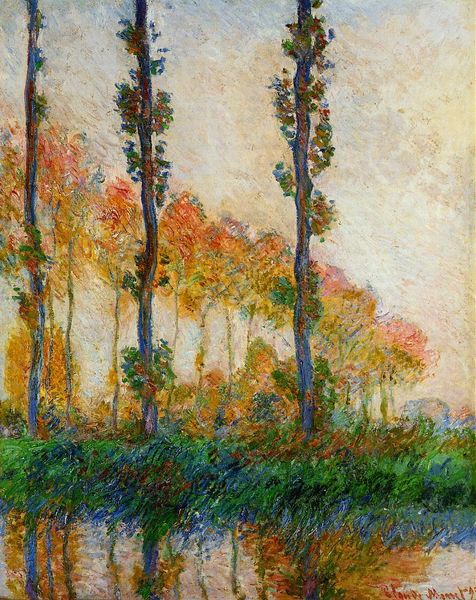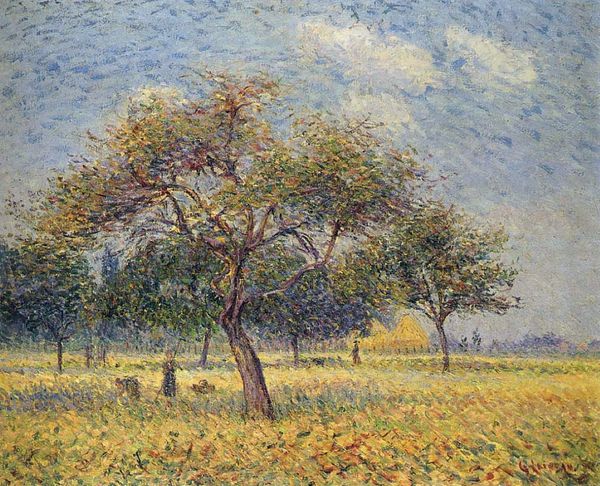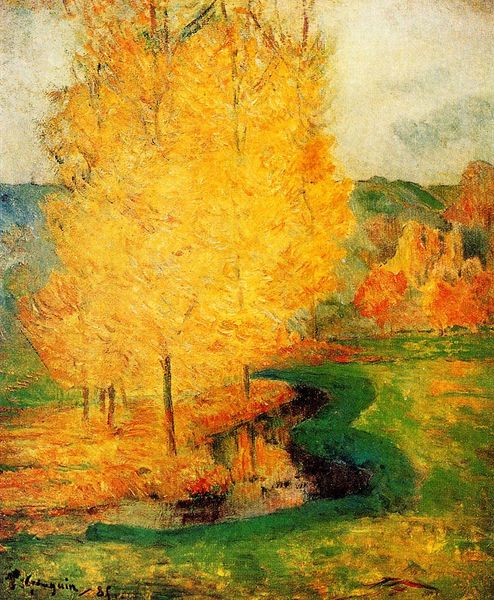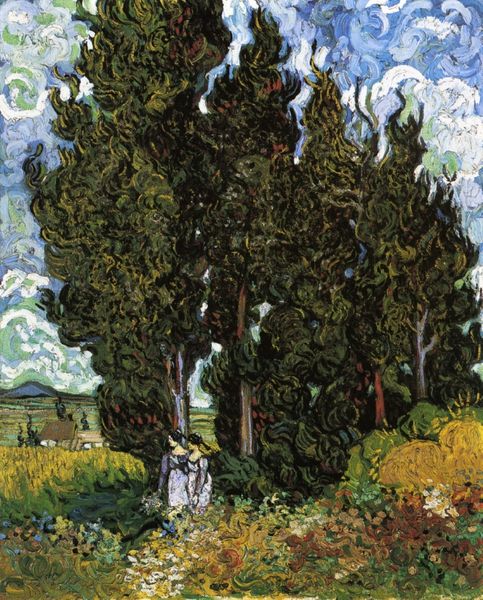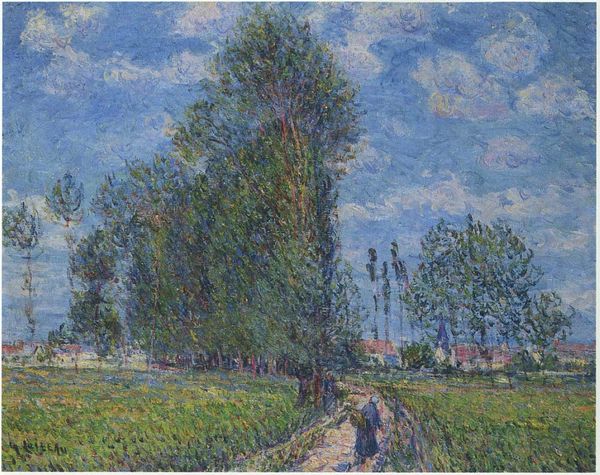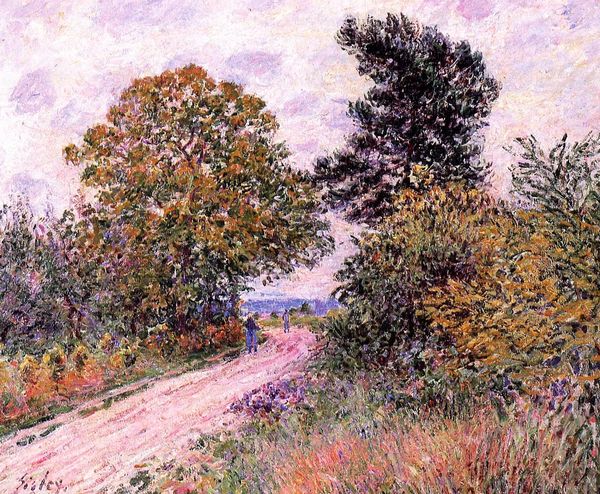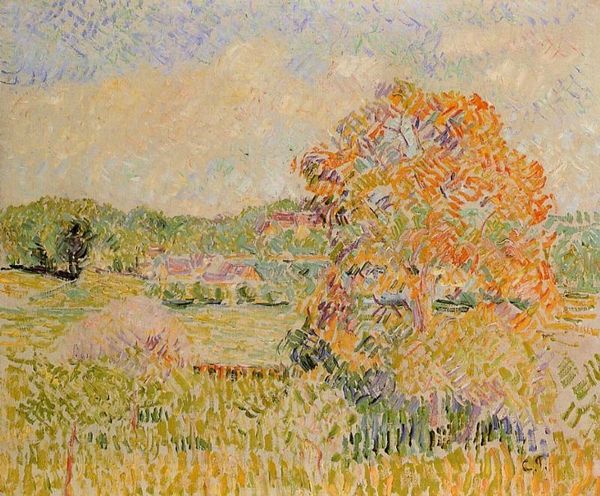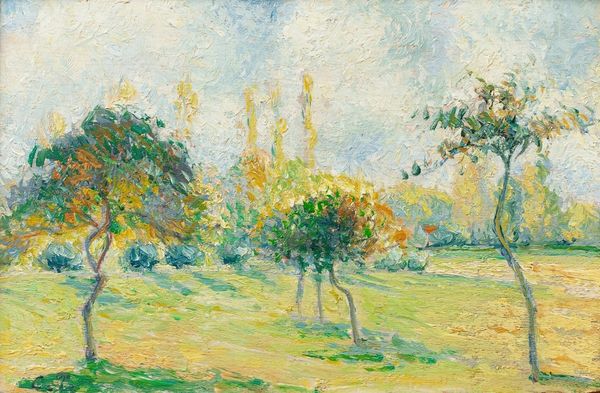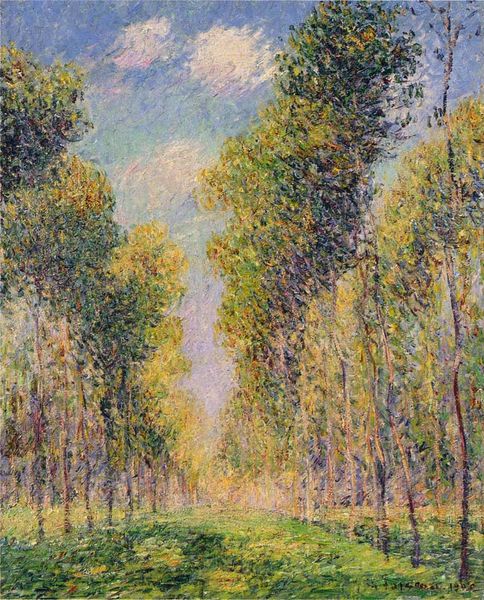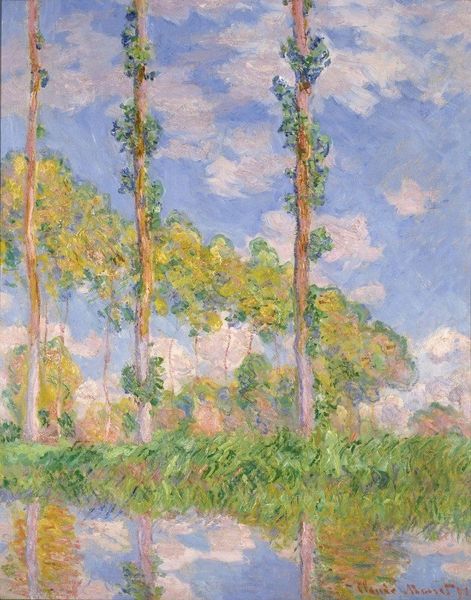
Copyright: Public domain
Curator: Hassam's 1919 oil on canvas, "The Two Hickory Trees," alternatively known as "Golf Player," presents a serene rural scene bathed in autumnal light. What are your initial thoughts? Editor: There's a textural richness that really captivates—the layering of brushstrokes feels almost tactile. One can practically sense the rough weave of the canvas and the thick impasto of the paint itself. And those ochre and golden tones...quite striking. Curator: Indeed. Hassam's handling of color and light showcases his engagement with Impressionism. The composition itself, however, suggests more than just surface appearances; the two trees stand as almost anthropomorphic figures, framing the lone figure below. Editor: And the labor implied in the work, right? Consider Hassam lugging his easel, paints, and canvases en plein air. Then we see the evidence of the work in each deliberate stroke that brings the landscape to life – it’s physical. Not to mention the subtle social context. Was golf becoming more democratized then, or was it still largely for the wealthy? Curator: That's fascinating – to place the artwork in its immediate historical moment. But consider too the formal interplay. The verticality of the trees, mirrored in the woman’s upright stance, creates a subtle rhythm. It's echoed by the horizontal line of the distant tree-line, which serves to both ground the composition and lead the eye back toward the figures. Editor: Still, the physical act of applying the paint, and the very earth from which the pigments are derived – these elements are inextricably linked. It makes you wonder about the supply chains for art materials, how class dictated who could access those colors. Curator: An important layer. However, I’d say the success here lies in the formal relations – color, form, line. It’s those components that generate the aesthetic experience. Editor: But, isn’t part of the aesthetic experience the understanding of where this all originates? It’s both form and process, inseparable and interconnected. Curator: I appreciate how your reading contextualizes the work in broader societal realities. Editor: And you draw out the harmonious aesthetic and the structured composition. It’s through that combined viewing we truly understand Hassam's endeavor.
Comments
No comments
Be the first to comment and join the conversation on the ultimate creative platform.
